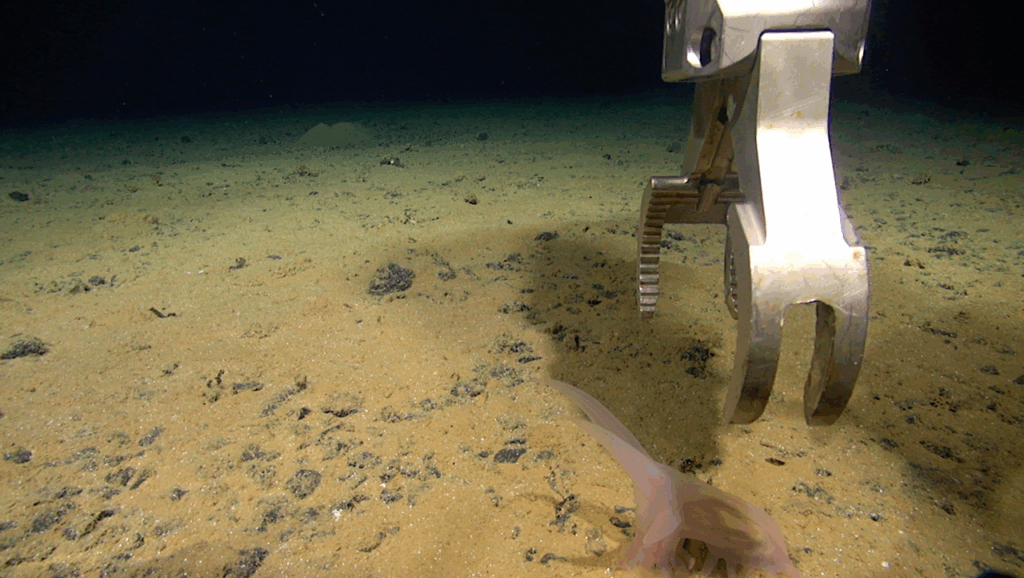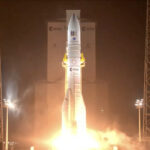Now Reading: Why M-dwarf Flares Have Limited Impact On sub-Neptunes’ Atmospheric Evaporation
-
01
Why M-dwarf Flares Have Limited Impact On sub-Neptunes’ Atmospheric Evaporation
Why M-dwarf Flares Have Limited Impact On sub-Neptunes’ Atmospheric Evaporation


Temporal evolution of atmospheric mass loss in response to stellar flares of different energies. The ratio of the instantaneous mass loss rate to the quiescent mass loss rate is shown for input flares ranging from 1031 erg (dark blue) to 1036 erg (dark red). Values are provided at the system’s Hill radius. — astro-ph.EP
M-type stars are prime targets for exoplanet searches within their habitable zones (HZs). M-type stars also exhibit significant magnetic flaring activity, especially during the first billion years, which can potentially accelerate the evaporation of the hydrogen-helium envelopes of close-in planets.
We use the time-dependent photo-ionization hydrodynamics code ATES to investigate the impact of flares on atmospheric escape, focusing on a sub-Neptune-sized planet orbiting an early M-type star at distances of 0.01, 0.1, and 0.18-0.36 AU–the inner and outer edges of the HZ. Stellar flaring is modeled as a 1 Gyr-long high-activity phase followed by a 4 Gyr-long low-activity phase, each characterized by a suitable flare frequency distribution.
We find that flares have a modest impact (i.e., less than a factor of two) on increasing the cumulative atmospheric mass loss, with the greatest enhancement occurring when the planet is at its closest separation. However, the relative enhancement in mass loss between flaring and non-flaring cases is greater at larger separations. This trend arises because, as stellar irradiation fluctuates between quiescent levels and peak flares, the proportion of time the planet spends in energy-limited versus recombination-limited mass loss regimes depends on its orbital separation.
Additionally, we demonstrate the existence of a characteristic flare energy, intermediate between the minimum and maximum values, that maximizes the fractional contribution to flare-driven mass loss.
Our results indicate that the flaring activity of M-dwarfs does not significantly affect the atmospheric retention of close-in Neptune-sized planets, including within the HZ. The potential occurrence of rare super-flares, which observational campaigns might be biased against, does not alter our conclusions.
Andrea Caldiroli, Francesco Haardt, Elena Gallo, George King, Juliette Becker, Federico Biassoni, Riccardo Spinelli
Comments: 8 pages, 5 figures. Submitted to A&A
Subjects: Earth and Planetary Astrophysics (astro-ph.EP)
Cite as: arXiv:2506.08014 [astro-ph.EP] (or arXiv:2506.08014v1 [astro-ph.EP] for this version)
https://doi.org/10.48550/arXiv.2506.08014
Focus to learn more
Submission history
From: Andrea Caldiroli
[v1] Mon, 9 Jun 2025 17:59:59 UTC (217 KB)
https://arxiv.org/abs/2506.08014
Astrobiology,
Stay Informed With the Latest & Most Important News
-
 012024 in Review: Highlights from NASA in Silicon Valley
012024 in Review: Highlights from NASA in Silicon Valley -
 02Panasonic Leica Summilux DG 15mm f/1.7 ASPH review
02Panasonic Leica Summilux DG 15mm f/1.7 ASPH review -
 03From Polymerization-Enabled Folding and Assembly to Chemical Evolution: Key Processes for Emergence of Functional Polymers in the Origin of Life
03From Polymerization-Enabled Folding and Assembly to Chemical Evolution: Key Processes for Emergence of Functional Polymers in the Origin of Life -
 04How New NASA, India Earth Satellite NISAR Will See Earth
04How New NASA, India Earth Satellite NISAR Will See Earth -
 05And Thus Begins A New Year For Life On Earth
05And Thus Begins A New Year For Life On Earth -
 06Astronomy Activation Ambassadors: A New Era
06Astronomy Activation Ambassadors: A New Era -
07SpaceX launch surge helps set new global launch record in 2024




















